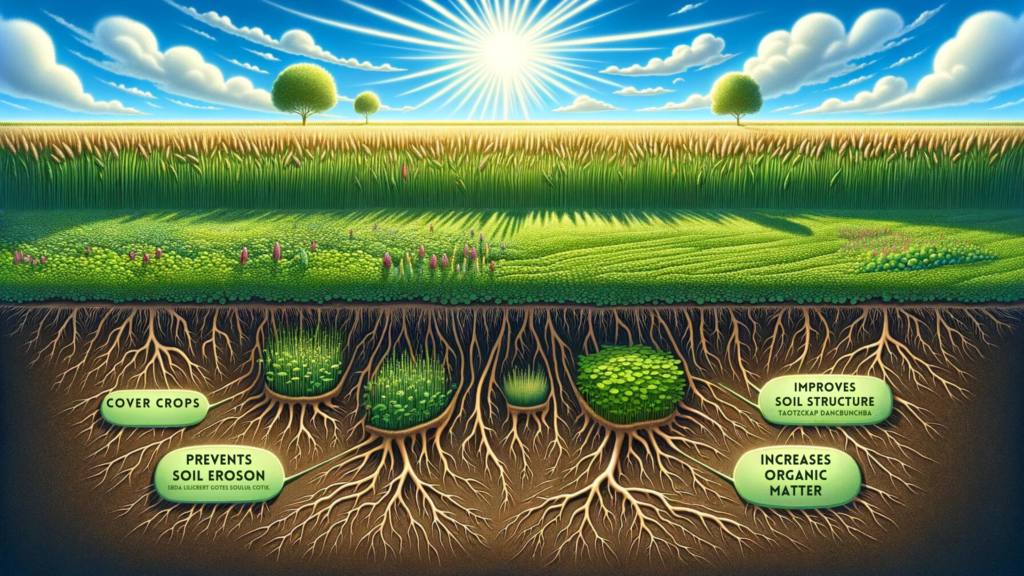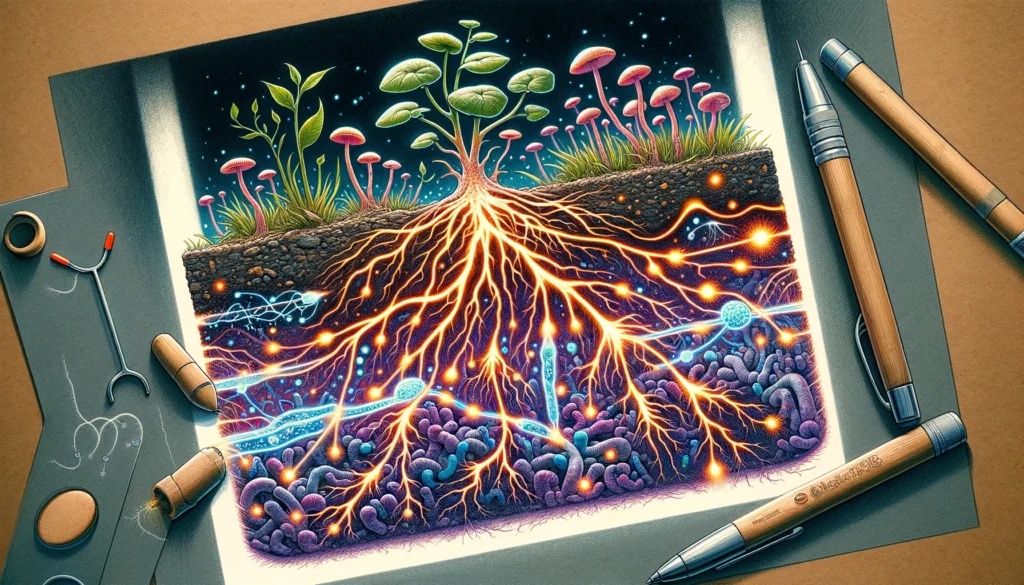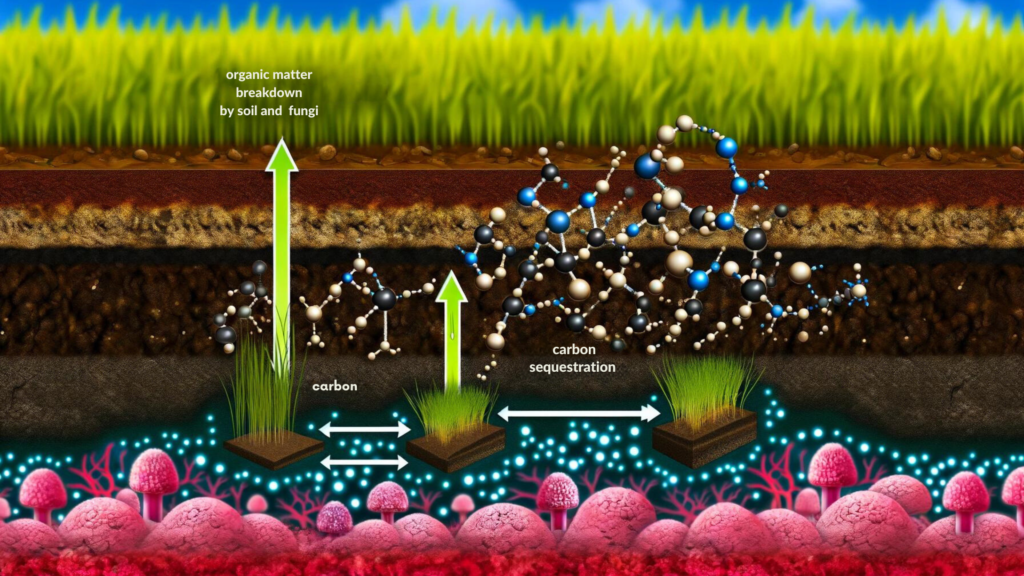Welcome to the fifth blog of our series – “Green Duo: Cover Crops & Fungi in Eco-Farming“.
As we continue to navigate the challenges of climate change, the agricultural sector is turning towards more sustainable practices. Among these, the partnership between cover crops and fungi stands out as a beacon of eco-friendly farming. This duo works together to create a more resilient agricultural system that not only supports the environment but also enhances soil health and agricultural productivity. Let’s dive into how cover crops and fungi are teaming up to revolutionize agriculture in a climate-conscious world.
The Role of Cover Crops
Cover crops play a pivotal role in the modern farming playbook, especially when it comes to sustainable and regenerative agricultural practices. These crops, which include varieties like clover, vetch, and rye, are not grown for harvest in the traditional sense. Instead, their purpose is to occupy the soil during off-seasons or between the growing periods of cash crops. This practice does more than just keep the land covered; it serves multiple benefits that are crucial for long-term soil health and farm productivity.

Cover crops act as a protective blanket for the soil, shielding it from erosion caused by wind and water. By covering the ground, they help maintain the soil structure and prevent the loss of topsoil, which is essential for plant growth. Furthermore, as these plants grow and later decompose, they contribute organic matter to the soil. This addition improves soil structure, making it more porous and better able to retain moisture and air, both of which are critical for root development.
Moreover, cover crops are natural fertilizers that enrich the soil with nitrogen and other nutrients, reducing the need for chemical fertilizers. They also play an essential role in suppressing weeds, as their growth can outcompete unwanted plant species for space and resources. In doing so, cover crops help reduce the reliance on herbicides, further contributing to the sustainability of farming operations.
Fungi: The Underground Allies
Fungi, particularly mycorrhizal fungi, form an essential part of the soil’s living community, establishing symbiotic relationships with the roots of cover crops and other plants. This partnership is fundamental to the health and productivity of the soil ecosystem. Fungi extend the root system’s reach through their mycelial networks, tiny threads that explore the soil far beyond the plant roots themselves. This extended network significantly increases the plant’s access to water and nutrients, which are often scarce or out of reach in the soil.

These underground allies work in the shadows but play a significant role in nutrient cycling within the soil. By decomposing organic matter, fungi release nutrients in a form that plants can absorb and use. This process not only feeds the plants but also contributes to the overall fertility of the soil.
Moreover, the presence of mycorrhizal fungi in the soil helps improve soil structure. The mycelium binds soil particles together, creating aggregates that enhance the soil’s porosity and aeration. This improved structure allows for better water infiltration and retention, reduces runoff, and minimizes erosion.
Fungi also contribute to the soil’s ability to sequester carbon. Through their interactions with cover crops and other plants, fungi facilitate the transfer of carbon from the atmosphere into the soil. This carbon is then stored in the soil organic matter and the fungal biomass, playing a critical role in mitigating climate change.
The symbiosis between cover crops and fungi exemplifies nature’s intricacy and efficiency. By leveraging the natural abilities of both, sustainable farming practices can significantly improve soil health, increase biodiversity, and contribute to a more sustainable and resilient agricultural system.
Boosting Soil Health and Carbon Sequestration
When cover crops and fungi team up, they turn the soil into a powerhouse of health and productivity. Cover crops like clover and rye act like a green blanket over the earth, adding a layer of protection and nourishment. As these plants grow, they not only prevent erosion but also pump fresh organic material into the ground when they die and decompose. This is where fungi step in, breaking down this organic matter into nutrients that future crops can easily absorb.

But there’s more to this story than just nutrient cycling. This dynamic duo plays a critical role in carbon sequestration – the process of capturing and storing atmospheric carbon dioxide in the soil. Cover crops draw CO2 from the air during photosynthesis, transferring it into the soil through their roots. Meanwhile, fungi, with their vast underground networks, help to distribute this carbon deeper into the soil, locking it away. This buried carbon not only enriches the soil but also keeps it out of the atmosphere, where it would contribute to global warming.
Enhancing Water Retention and Biodiversity
Cover crops and fungi are like the soil’s hydration system, working together to make sure that moisture stays where it’s needed. Cover crops, with their dense foliage, shield the soil from direct sunlight, reducing evaporation. Their roots, intertwined with fungal mycelium, create a structured soil that holds water more efficiently. This means that even during dry spells, the soil remains moist, providing plants with a steady supply of water and reducing the need for irrigation.

Beyond water management, this partnership fosters an environment where life thrives. Different types of cover crops support a diverse range of fungi, which in turn attract various soil organisms, from beneficial bacteria to earthworms. This underground ecosystem is crucial for healthy soil and robust plant growth. Moreover, above ground, the variety of cover crops can attract pollinators and beneficial insects, adding to the farm’s biodiversity and ecological resilience. Through these actions, cover crops and fungi not only support each other but also bolster the entire agricultural system, promoting a balance that benefits the soil, plants, and the planet.
Author’s Note
Exploring the synergistic relationship between cover crops and fungi offers valuable insights into sustainable agricultural practices. By adopting these methods, farmers can contribute to a healthier planet while enjoying the benefits of improved soil health and productivity. As we move forward, it’s clear that these climate-friendly practices will play a pivotal role in shaping the future of agriculture.
G.C., Ecosociosphere contributor.
References and Further Reading
- “The Soil Will Save Us” by Kristin Ohlson – A compelling look at how scientists, farmers, and foodies are harnessing the power of soil to fight climate change.
- “Mycelium Running: How Mushrooms Can Help Save the World” by Paul Stamets – An exploration of the environmental and agricultural benefits of fungi.
- “Dirt to Soil: One Family’s Journey into Regenerative Agriculture” by Gabe Brown – A firsthand account of adopting sustainable farming practices that rejuvenate the soil.
Stay tuned for our next blog, where we’ll delve deeper into innovative strategies for reducing agricultural emissions and promoting global food security through sustainable practices.





Comments
I don’t think the title of your article matches the content lol. Just kidding, mainly because I had some doubts after reading the article.
Can you be more specific about the content of your article? After reading it, I still have some doubts. Hope you can help me. https://www.binance.com/bg/join?ref=V2H9AFPY
Thanks for sharing. I read many of your blog posts, cool, your blog is very good.
Can you be more specific about the content of your article? After reading it, I still have some doubts. Hope you can help me.
I don’t think the title of your article matches the content lol. Just kidding, mainly because I had some doubts after reading the article.
Your article helped me a lot, is there any more related content? Thanks!
Your article helped me a lot, is there any more related content? Thanks!